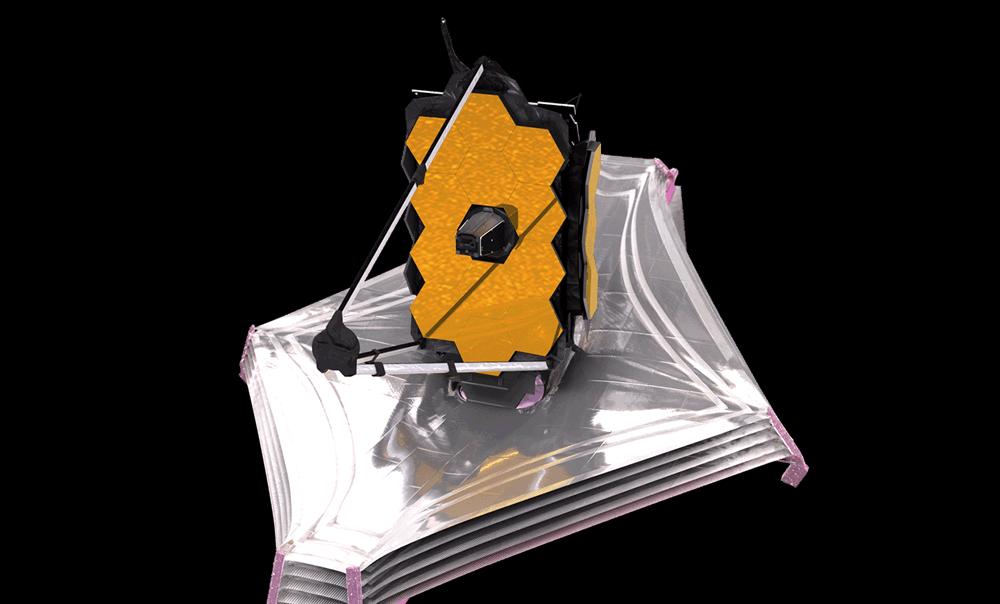On the morning of January 6, Beijing time, NASA confirmed that the James Webb Space Telescope has successfully deployed a secondary mirror support structure.

Simulation of the current state of the James Webb Space Telescope (Source: NASA)
The James Webb telescope uses the Cassegreen optical system. When light from the distant universe hits Webb's 6.5-meter diameter main mirror, it reflects and focuses on a 74-centimeter-diameter secondary mirror, which in turn directs the light into the terminal device. The deployment of the secondary mirror in place will directly affect the imaging of the telescope, and if you are not careful, the $10 billion telescope will face the risk of direct scrapping.
Sub-mirror of the James Webb Space Telescope (Source: NASA)
The secondary mirror is supported by three 7.6-meter-long unfoldable pillars, each of which is light but strong enough to withstand complex spatial environments. Since James Webb's hood has been unfolded, the temperature of the backlight surface is close to minus 200 degrees Celsius, so the relevant joints and motors of the unfolding mechanism must be reheated to work.
James Webb Space Telescope Secondary Mirror Support Structure (Source: NASA)
At 22:52 beijing time on January 5, the action was launched and moved to its extended position at about 0:28 on January 6. At about 0:51, the telescope sent back a signal showing that the support structure of the secondary mirror was locked. By about 1:23 a.m., the engineers confirmed that the structure was fully fixed and locked in place, and the secondary mirror was successfully deployed!
It was one of the most critical steps in a series of complex unfolding maneuvers on James Webb's flight to the second Lagrange point (L2) 1.5 million kilometres away. Microgravity, extremely low temperatures, precision in place, and one-time success are all indispensable guarantees for the proper operation of the Webb telescope.
Next, Weber will deploy an important radiator system, the ADR, which helps dissipate heat from the device and the main mirror.